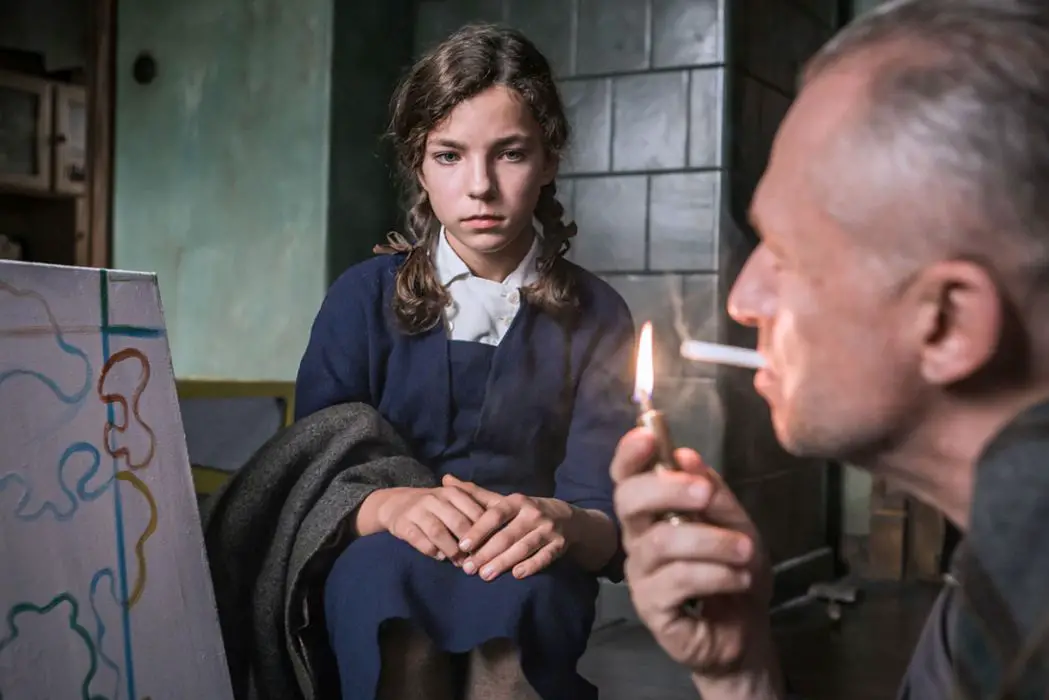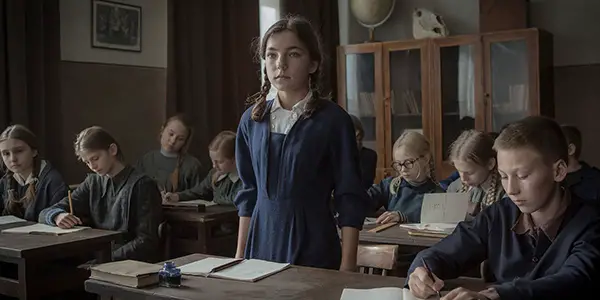AFTERIMAGE: The Final Frame For A Legendary Director

I'm Alice. I'm a writer, blogger, film nerd, determined dreamer,…
Attempting to briefly summarise what makes Afterimage so special is virtually impossible. There are so many elements of this film that result in leaving an imprint of afterthought and fond memories on your mind long after viewing it; so much so that trying to gauge legitimate faults with it proves to be a challenge.
This powerful story and its characters never falters for a second, and provides an array of questionable themes that keeps its audience engrossed in every single frame of the film. The narrative itself covers all manner of interesting subjects such as art, inspiration, politics, war, socialism, realism and idealism. It is simply another significant chapter in Polish history from infamous writer and director Andrzej Wajda, who died back in October 2016.
Afterimage isn’t like anything else that has come before it in terms of a quirky yet horrifying outlook on history; although is perhaps one that is unlikely to travel as widely as some of Wajda‘s past subjects. On the surface of it, it appears to be a complicated and controversial piece of film, but underneath this facade lies a hauntingly provoking story full to the brim with lingering creativity.
Afterimage is an essential perception of the tragic cultural history of the communist era in Eastern Europe and the disasters wrecked by its totalitarian rule. It depicts the story of charismatic painter Wladyslaw Strzeminski – portrayed by polish actor Boguslaw Linda. Wladyslaw is a teacher who is deeply adored by his students, and is strongly opposed to social realism; therefore he is insistent on maintaining his own artistic freedom in spite of political obstacles.
When Film Collides With Art
Afterimage is as much about realism and political thinking as it is about art. Art and creativity are the inner core of what the film is all about, and the passion that flourishes from Wladyslaw is what makes it such a compelling viewing.

In an early scene, Wladyslaw sits on the floor of his studio as he looks at a canvas. The camera then reverses its angles, and we see the white canvas suddenly turn into a vivid blood-red colour. Shortly following this, the entire studio is suffused with the same red colouring, because a giant banner celebrating Joseph Stalin is being hoisted onto the front of a building. Wladyslaw crawls over to his window — quite literally, as he lost an arm and a leg from injuries suffered in World War I — and pokes at the banner with one of his crutches, tarnishing the fabric; which attracts the attention of the apparatchiks in charge. This is just one of many examples of how Afterimage prevails in its clever merging with art and reality.
In a nutshell, Wladyslaw collides with the latest modes demanded by Stalinist rule, and this is where the dramatisation of such situations intertwine with the imagination and beauty of art in an almost perfectly balanced way. The film depicts an appalling system in such a naturally conventional way, yet is filled with complicit citizens who are grinding down Wladyslaw and altering his everyday life.
Wajda strips away a fair amount of context by merely alluding to aspects of Wladyslaw’s life – such as the hostile relationship with his estranged ex-wife and the cold relationship he has with his daughter, Nika – without depicting them at length or in detail. This peculiar choice could be interpreted as incomplete or somewhat narrowly focused, but that perspective would miss the film’s thorough prominence on Wladyslaw’s diminishing sense of self throughout post-war Poland. It could be argued that this lack of emphasis on the deeper backgrounds of his life are a rare misstep in the film, and without it the film is fairly slow on its upkeep.

However, the symbolism in the importance of what Wladyslaw stands for is enough to keep your eyes and minds peeled from start to finish regardless of the uneven pace. He is presented as a beacon of singularity and reason, depicting the heroic teacher stereotype in a fashion that many will recognise from the likes of Mr. Holland’s Opus or Dead Poets Society. With this in mind, it unveils into a rather tragic autobiographical representation of what many people were facing in this era of history. It is a powerful and emotive portrayal of a difficult time that conveys the sufferings of a broken marriage, an artist dying to keep his craft alive, and an activist who preferred death over the rules of a Stalinist state.
In terms of the production and the surroundings of its imagery, Afterimage is a picture that achieves complete precision. The colouring, the lighting, the costumes and the entire fabrication of the film resembled the bleak atmosphere that the story needed to conceive the desolate lifestyle at the time.
A Personal Touch
Not only is Afterimage an important milestone in directing as the final film from Andrzej Wajda, but it’s also quite close to home for him in many ways. Wajda — whose father was murdered by Stalin, and whose own career was hampered by the same oppressive standards of social realist art which ruined Wladyslaw in his final years — certainly has a right to harbour ill will towards the people who enforced these laws with little subtlety or sympathy.
Wajda spent his career objecting against this power-hungry dynamic, and it stands to reason that he’d go out doing much the same. Again, this is a pertinent detail that makes Afterimage such a raw and captivating watch, and Wajda uses these contrasting spaces to show how history has impacted his own life as well as millions of nameless others who experienced similar fates. When the government takes away Wladyslaw’s art, strips him of his position as a teacher at the university, and even makes it impossible for him to purchase art supplies at local stores, it’s Wajda’s way of interpreting a side of history that is both shocking and edifying.

Afterimage was the Polish entry for the 89th Academy Awards that took place in February earlier this year; but despite a lot of promise, failed to be nominated. This is unfortunate for many reasons, but more notably because it was the last hurrah for a hugely celebrated director and writer who had a distinctive connection to this story.
Taking the trophy in this category for 2017 was the prevalent movie, The Salesman; which would have proved to be huge competition for Afterimage regardless of any fellow nominees, as it’s arguably one of the greatest foreign language movies made to date, with a sentiment that relates to a lot of current issues.
Final Thoughts
Afterimage offers a legitimate cautionary example of history and provides us with ample food for thought; made even more special due to the fact that it acts as an appealing tribute to both the artist it profiles and to the director for whom it has become a swan song.
It is an angry, vivid, passionate film, and cinema is worse off now that Wajda – one of the truly towering greats of the form – has passed away. He was a director responsible for many of the most renowned Polish masterpieces, and Afterimage is no exception to this mantra. Therefore, there is some bittersweet consolation knowing that he went out with a bang, and with his directing boots still on.
Can you think of a film by the late, great Wajda that is memorable to you? Let us know in the comments!
Afterimage was released on the 19th May in the USA.
Does content like this matter to you?
Become a Member and support film journalism. Unlock access to all of Film Inquiry`s great articles. Join a community of like-minded readers who are passionate about cinema - get access to our private members Network, give back to independent filmmakers, and more.
I'm Alice. I'm a writer, blogger, film nerd, determined dreamer, foodie, vino inhaler and reality TV nut. I have ambitions to become a crazy dog lady in the very near future - www.welcometothelabyrinth.wordpress.com













